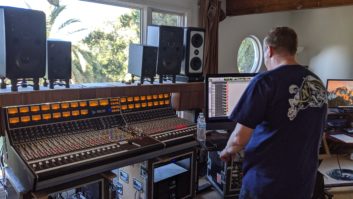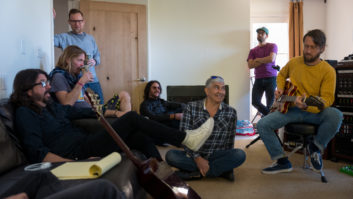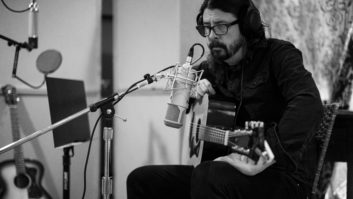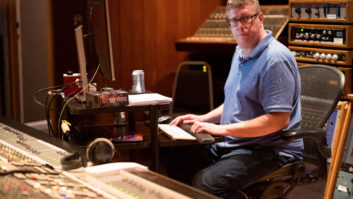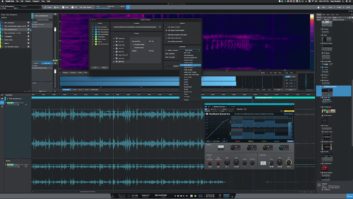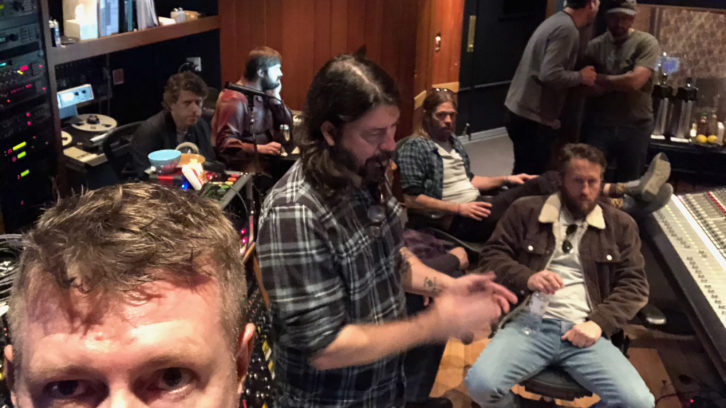
A remake of “Making a Fire” was made just before wrapping things up in December, 2019, making it both the first and last song tracked at the house before the group made the shift to Henson Recording Studios in mid-January 2020. Strings, background vocals and other overdubs were recorded at Henson, along with one complete new song, “Cloudspotter,” which was cut in the voluminous Studio A. “We used the vocal iso booth for the drums, because Studio A is just so massive,” tracking engineer Alex Pasco notes.
Recording Medicine at Midnight, Part 1: Foo Fighters in the House
Recording Medicine at Midnight, Part 2: Setting Up Shop
Recording Medicine at Midnight, Part 3: Miking The Foos
Recording Medicine at Midnight, Part 4: The Gang’s All Here
Adds lead engineer Darrell Thorp, “Dave wanted something almost dry and funky,” but after a few passes, co-producer Greg Kurstin decided to put the drums in the smaller room. “We’d heard good things about that back room,” says Pasco. “It was still giant. Even though it’s dead, it’s still just a huge room. Darrell got a killer drum sound in there.”
Strings were also recorded on two songs, using four players—two violins, viola and cello—making three or four passes to Kurstin’s arrangements. For those, Pasco employed a traditional Decca Tree array with Neumann M49 microphones, along with U47 spot mics on each player, supplemented by two stereo wide Telefunken C12s in the room.
Background vocals were recorded there, as well as some female singers, which included Grohl’s oldest daughter, Violet. Then Kurstin added a smooth edge to the Foos’ rockers. “I love doing vocal arranging,” the producer states. “Finding the countermelodies and weaving them together. Dave gave me a lot of freedom here, and it’s always fun. I would sit with a little keyboard and play the parts sometimes, because I don’t have the range to sing it.”
The album was mixed by Mark “Spike” Stent at EastWest Studios, assisted by Matt Wolach. The finished record indeed feels like five guys playing in a house. The hardest rocking band, whether playing together or one at a time, still rocks the joint. The Foos just can’t help it.
